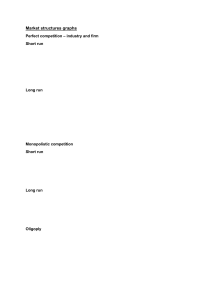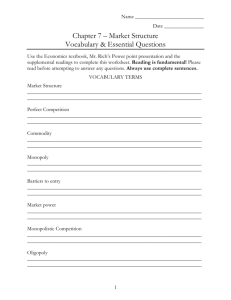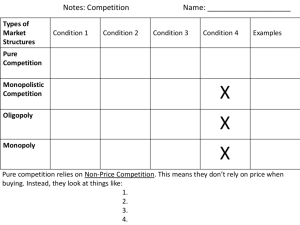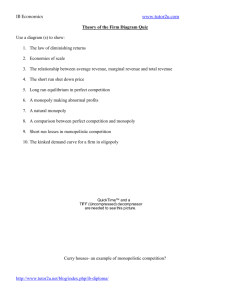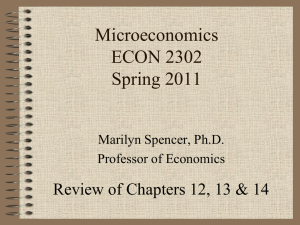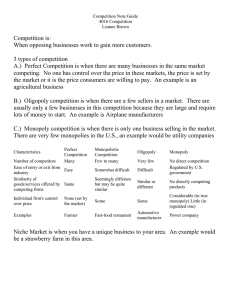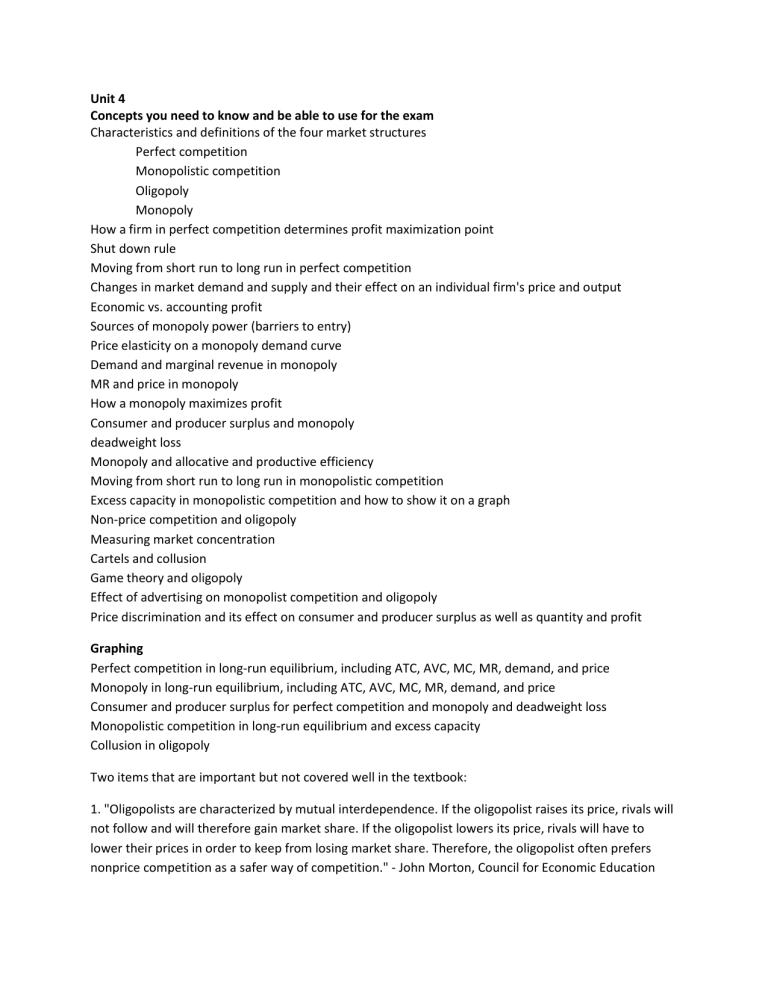
Unit 4 Concepts you need to know and be able to use for the exam Characteristics and definitions of the four market structures Perfect competition Monopolistic competition Oligopoly Monopoly How a firm in perfect competition determines profit maximization point Shut down rule Moving from short run to long run in perfect competition Changes in market demand and supply and their effect on an individual firm's price and output Economic vs. accounting profit Sources of monopoly power (barriers to entry) Price elasticity on a monopoly demand curve Demand and marginal revenue in monopoly MR and price in monopoly How a monopoly maximizes profit Consumer and producer surplus and monopoly deadweight loss Monopoly and allocative and productive efficiency Moving from short run to long run in monopolistic competition Excess capacity in monopolistic competition and how to show it on a graph Non-price competition and oligopoly Measuring market concentration Cartels and collusion Game theory and oligopoly Effect of advertising on monopolist competition and oligopoly Price discrimination and its effect on consumer and producer surplus as well as quantity and profit Graphing Perfect competition in long-run equilibrium, including ATC, AVC, MC, MR, demand, and price Monopoly in long-run equilibrium, including ATC, AVC, MC, MR, demand, and price Consumer and producer surplus for perfect competition and monopoly and deadweight loss Monopolistic competition in long-run equilibrium and excess capacity Collusion in oligopoly Two items that are important but not covered well in the textbook: 1. "Oligopolists are characterized by mutual interdependence. If the oligopolist raises its price, rivals will not follow and will therefore gain market share. If the oligopolist lowers its price, rivals will have to lower their prices in order to keep from losing market share. Therefore, the oligopolist often prefers nonprice competition as a safer way of competition." - John Morton, Council for Economic Education 2. Two kinds of efficiency. The textbook indicates that the basic condition for economic efficiency is that "the price system must confront decision makers with all the costs and all the benefits of their choices." In other words, efficiency requires that consumers confront prices that equal marginal costs. However, it's important to further distinguish two types of efficiency: productive and allocative. Productive efficiency is interested in producing goods at the lowest possible cost. Allocative efficiency refers to producing the goods and services that society wants. The test is that productive efficiency is obtained where price = minimum ATC and allocative efficiency where price = MC. Only perfect competition meets both criteria.
